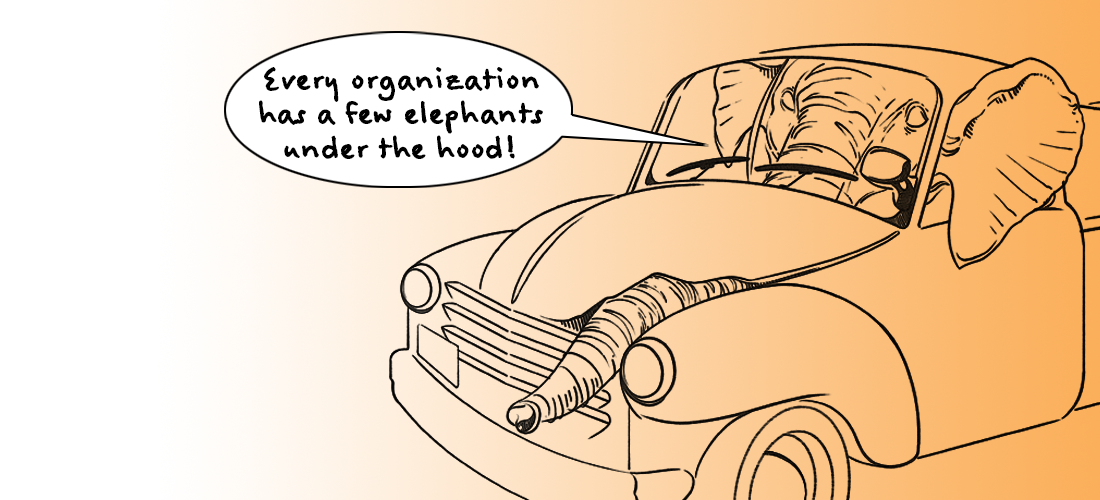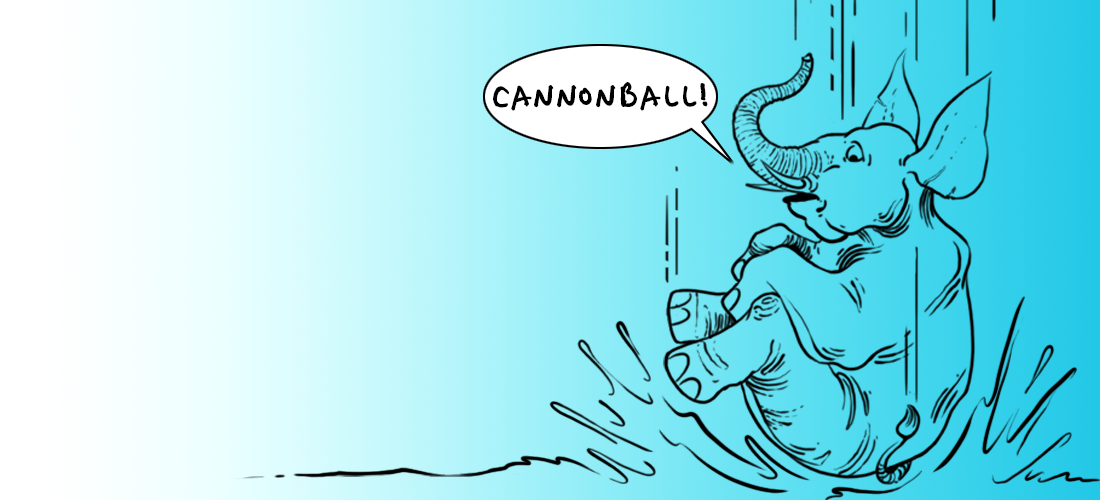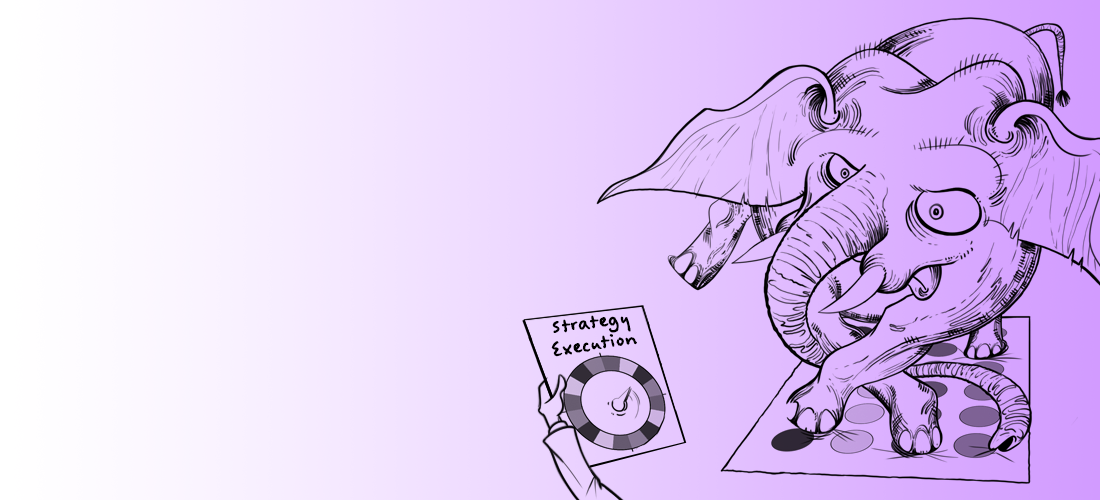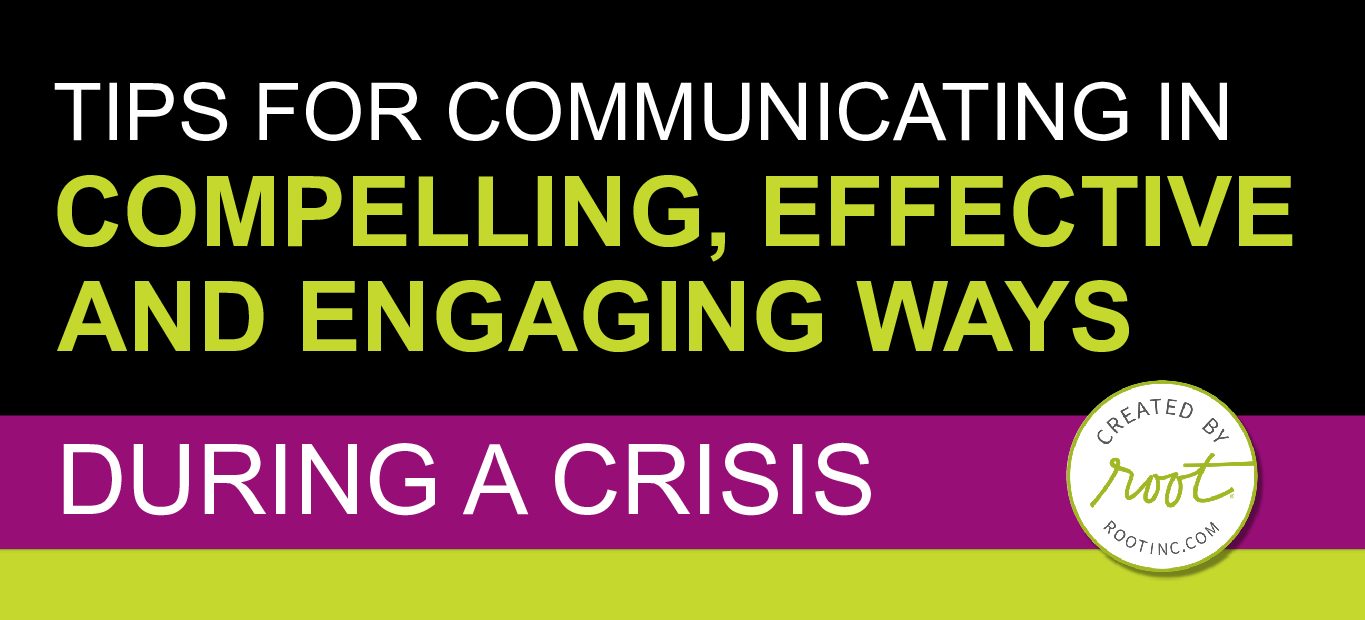PARTS 3 and 4: Strategic visualization disarms sensitive topics and suspends disbelief
In this post, I’ll focus on two visualization characteristics – highlighted in red below – that take the sting out of change by adding the necessary context that is so often neglected in corporate communication. As discussed in Part 1 and Part 2 of this blog series, cartoons can be the missing link in any organizational change initiative, as strategic visualization is a compelling, unifying, and powerful tool.
Strategic visualization has four key characteristics:
- It taps into an innate form of communication we’ve been using since the beginning of recorded human history.
- It disarms sensitive topics.
- It suspends disbelief.
- It provides powerful alignment and engagement properties.
Consider a scenario involving Michael, an excellent employee.
“OK, Michael, here’s the thing: I need you to change how you do your job. Believe me, it’s not because of anything you’re doing wrong, though!” –Aliyah (Michael’s excellent manager)
Here are a few potential reactions Michael may have to Aliyah’s comments.
- Michael feels upset. Despite what the manager said, he still thinks her remarks are a reflection on his work.
- “What did I do now? I’ve hit all my metrics.”
- “I’ve already said that that won’t work!”
- Michael feels frustrated that his hard work and experience aren’t being acknowledged. He develops a chip on his shoulder.
- “I’ve already tried it this way – don’t waste my time.”
- “That’s not a stretch goal – that’s impossible.”
You’ve probably been in Michael’s position, Aliyah’s position, or even both of their positions before. Wouldn’t it have been nice to have had a different kind of experience?
There’s a way that has been proven to avoid much of that negative inner dialogue (or dialogue with co-workers in the bathroom, in the hallway, or around the watercooler).
“We’ll tolerate the conclusions of our leaders, but we’ll ultimately act on our own conclusions.” –Jim Haudan
Change is the only constant
Can we all agree that change is hard? From eating habits to work processes, any change is tough. Whether it’s something in your professional life or your personal life, it’s never easy to transition out of an old routine and into a new one. So when you willfully add change to a hard-working employee’s daily routine, it stands to reason that you’re making their life, well, even harder!
When you ask an excellent employee like Michael to change his daily work routines – ones that he’s been accustomed to for months or even years – it may lead to emotional fallout. This might mean that you’ll lose Michael as an employee. Worse, Michael may stay at your organization but disengage.
All of this happens because Michael is human. And so is Aliyah, and so are we. You can see the challenge here, especially in a good organization where employees are valued and respected.
But here’s the catch: “Change isn’t going away,” says the pandemic, and the future-of-work evangelists, and the new generations of workers. “Change isn’t going away,” agrees the competition, and the new technology around the corner… and so on and on and on. Change is here to stay!
Strategic visualization disarms sensitive topics and suspends disbelief
When visualization is properly employed in a Socratic manner and people can have thoughtful, facilitated discussions based on the same comprehensive data that leaders are using, it creates context and empathy, which transport the audience beyond their myopic views and experiences. They no longer see themselves as the problem. They see the problem for what it is and apply their innate creativity to fix it. They no longer anchor their opinion in history but instead use history as an opportunity to get better.
I’ve seen many employees from all levels of organizations from every industry have genuine “lightbulb moments” while participating in Root Learning Map® experiences.
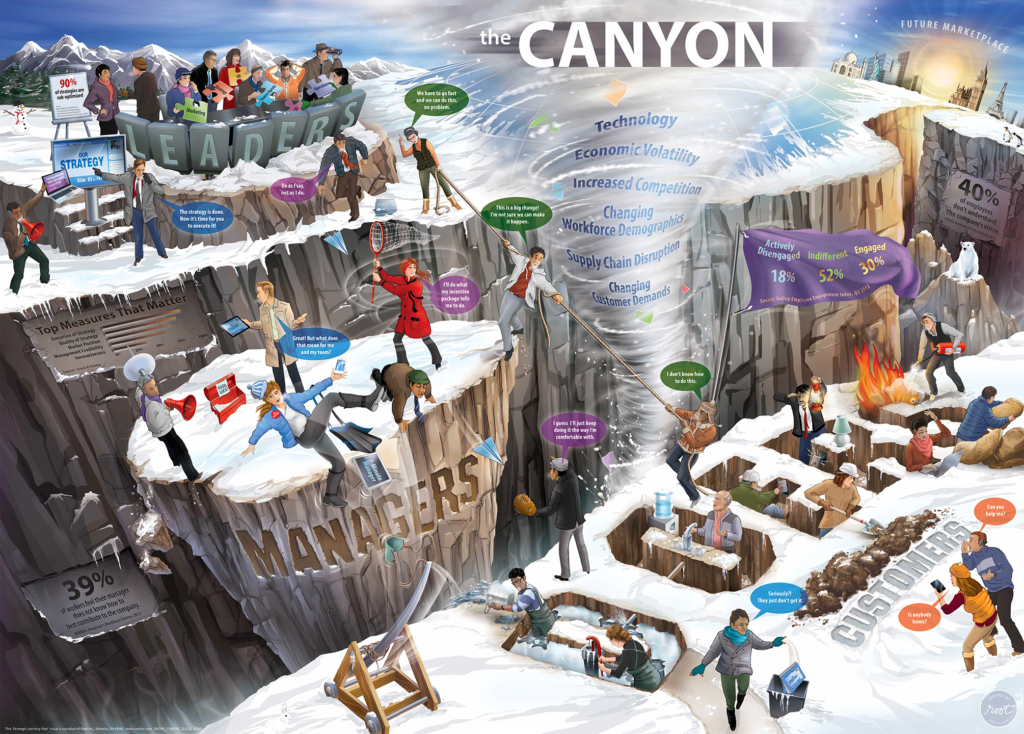
The importance of allowing employees to contribute to strategic conversations should never be overlooked. It’s critical to adopting and sustaining organizational change. As leaders, we often forget what it’s like to feel as if we have no voice, that we aren’t connected to our organizational values, or that our work doesn’t matter.
It’s quite simple, really: when you give your people the opportunity to work on the business and not just for the business, they often repay you by owning the results of the business. When they have your vantage point and your information, they come to your conclusions. This isn’t simply because they are your conclusions, but because they are often the right conclusions… and your employees can see and feel that now. And because of this, they can better understand the part they play in making the change.
In my final post of the series, we’ll explore how strategic visualization aligns and engages audiences.



